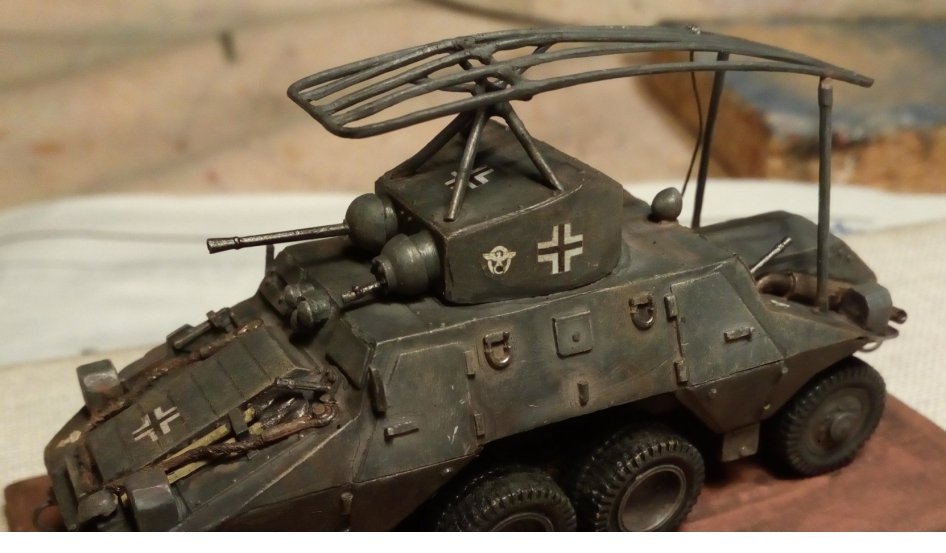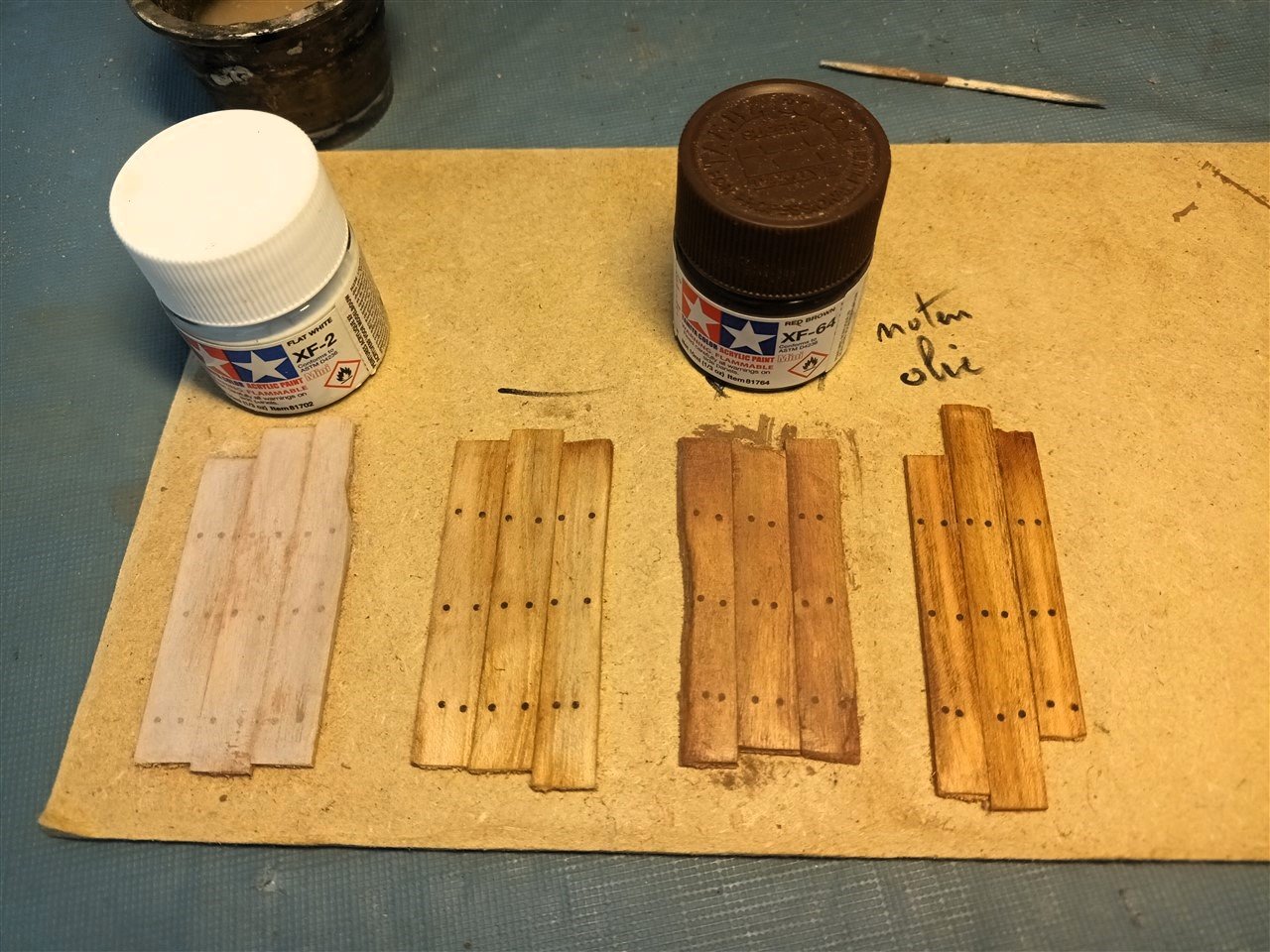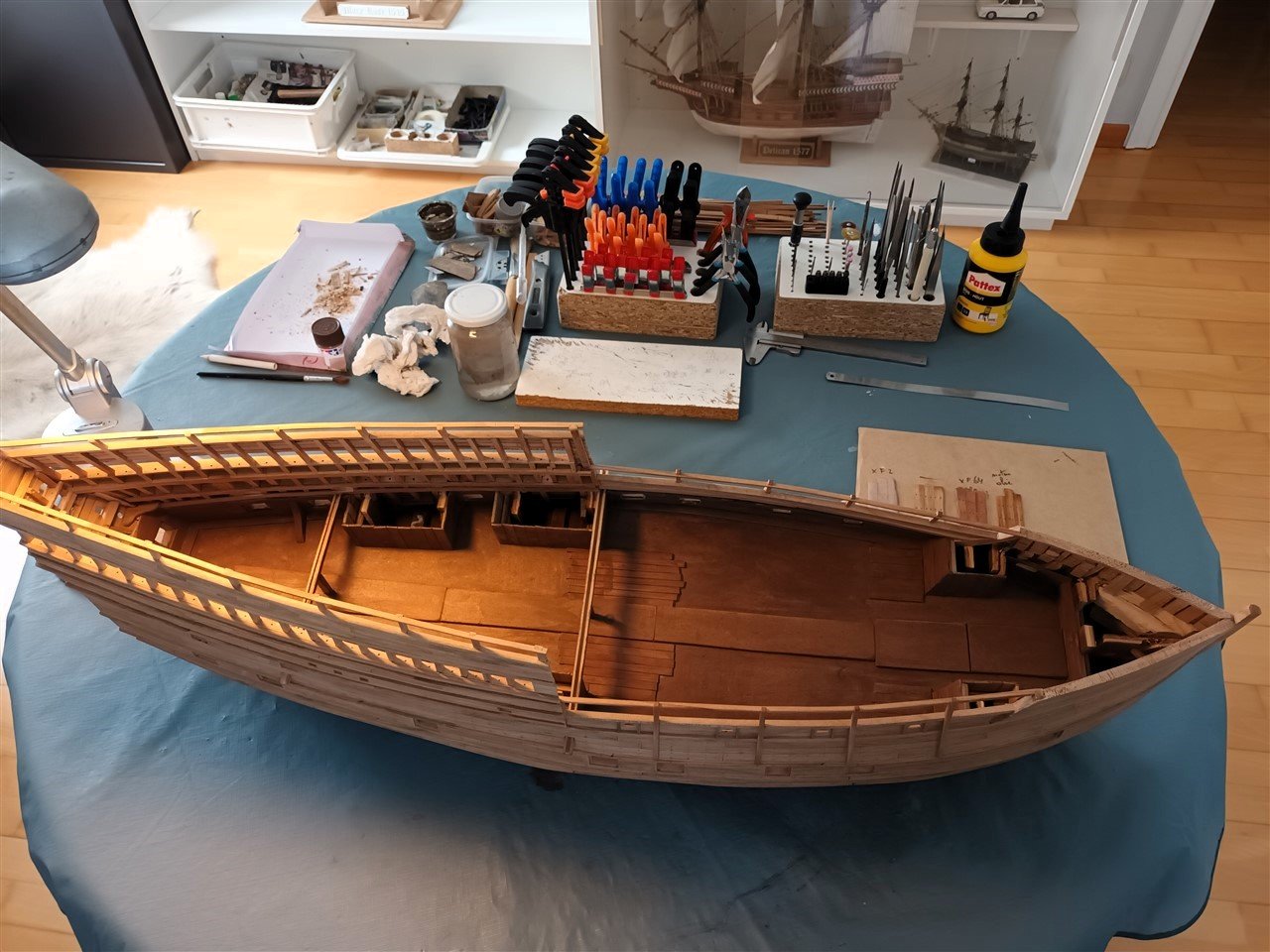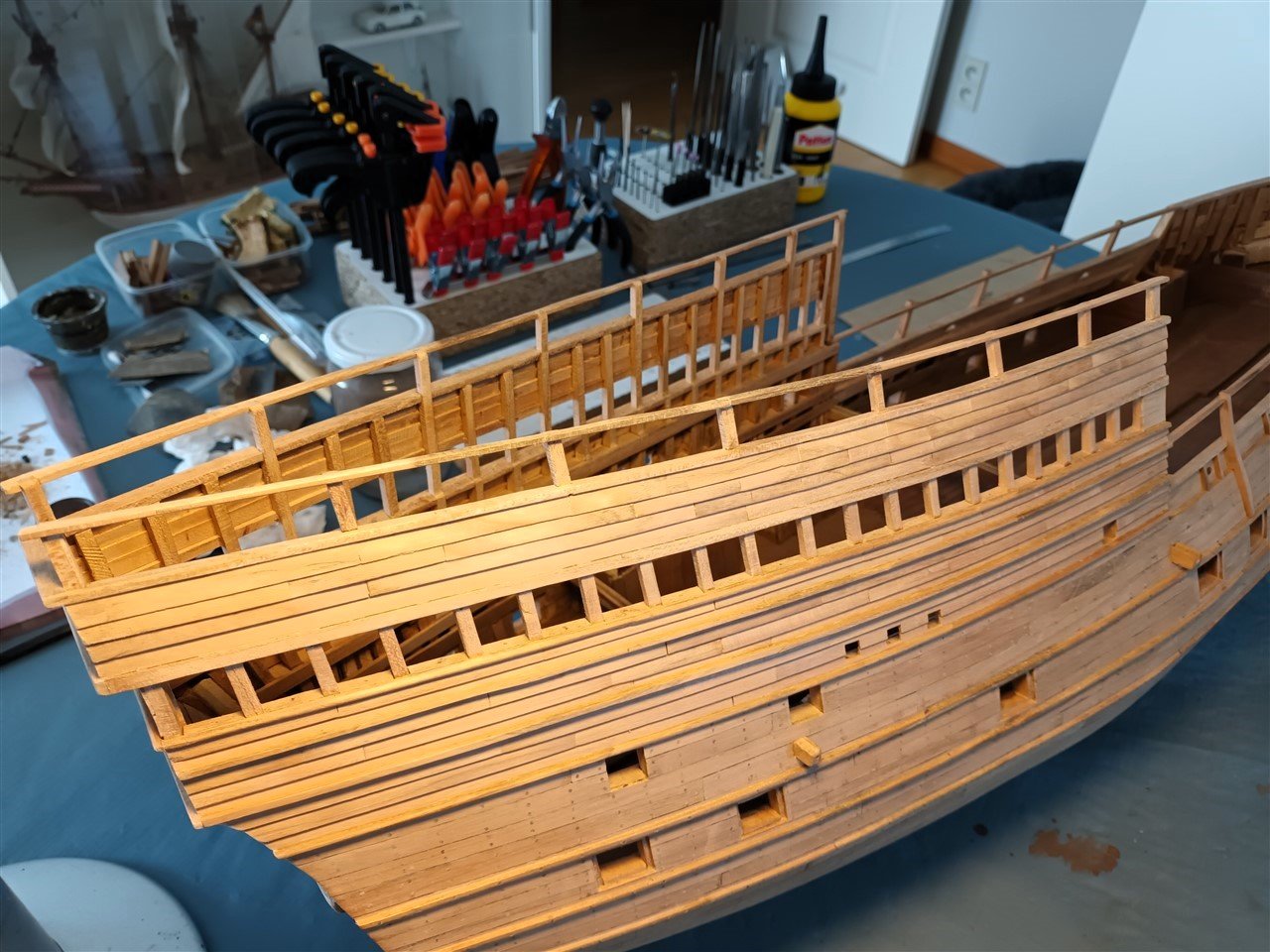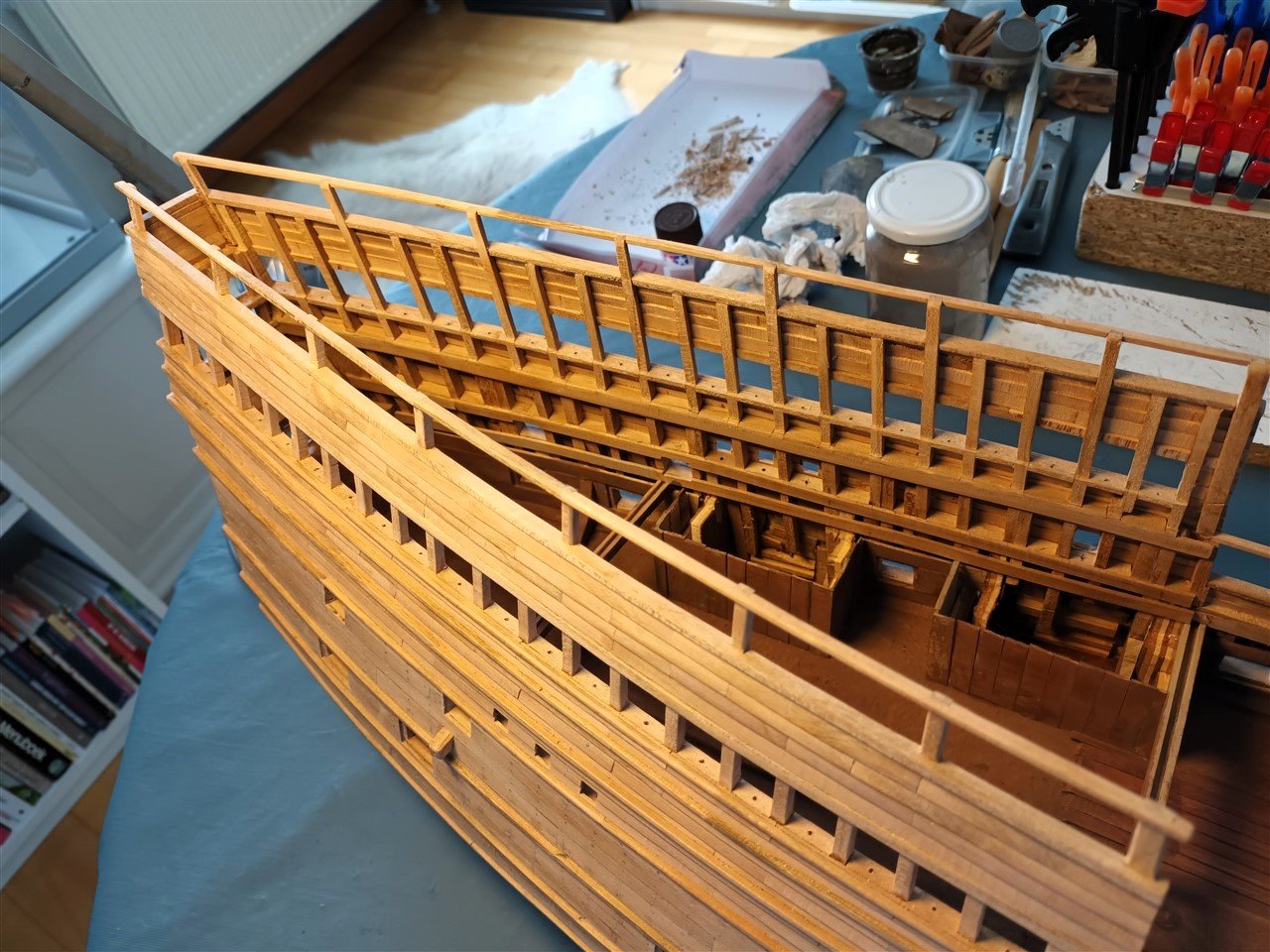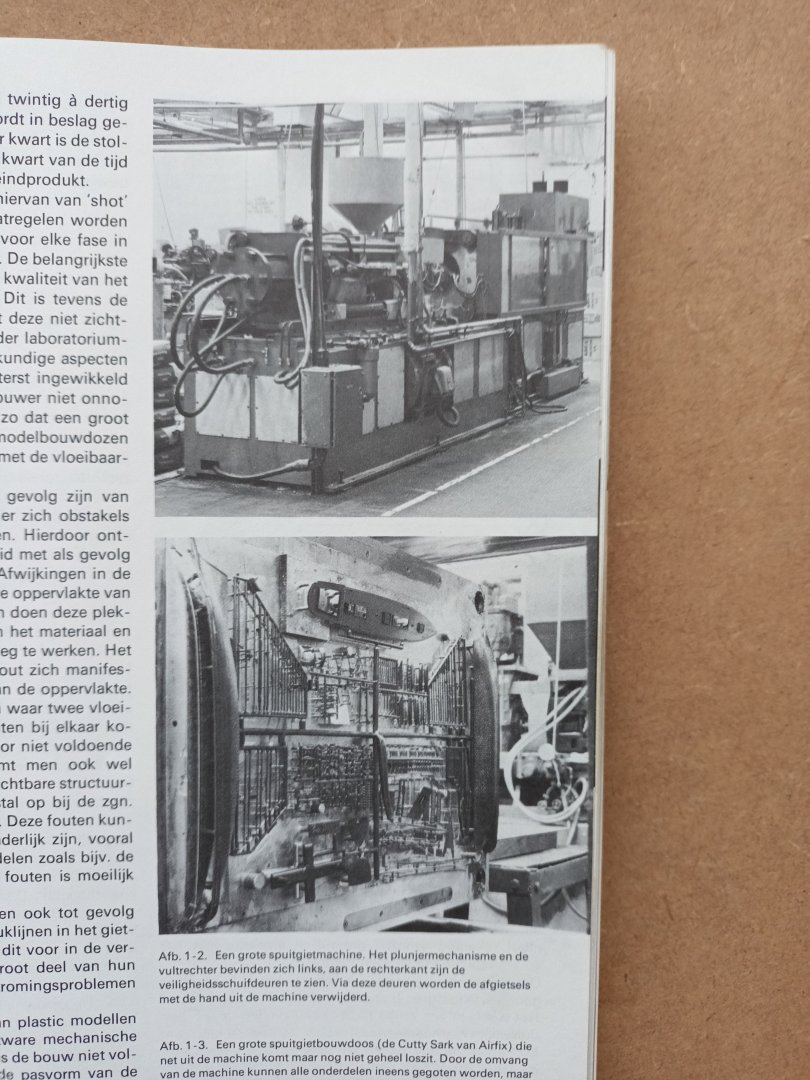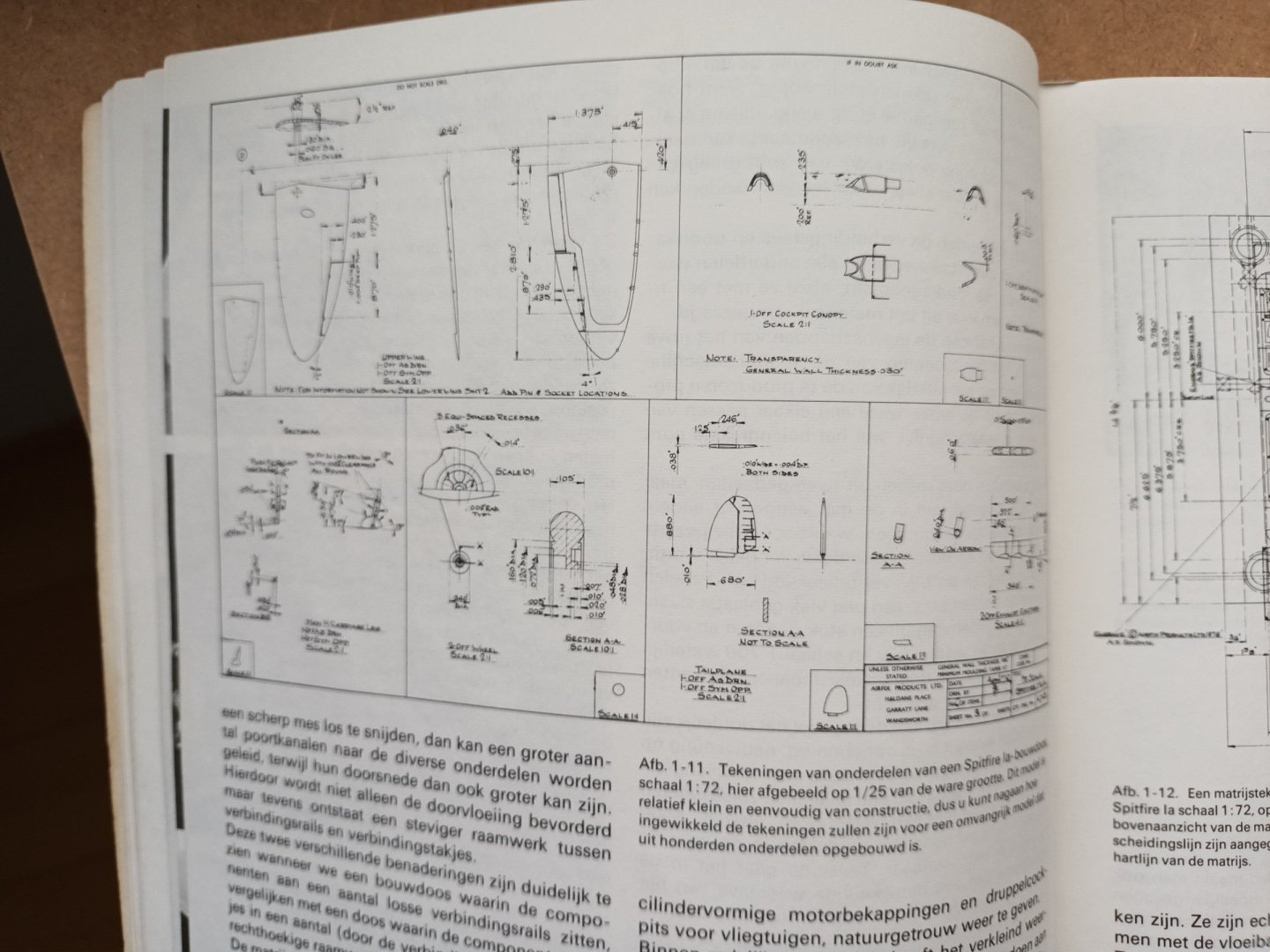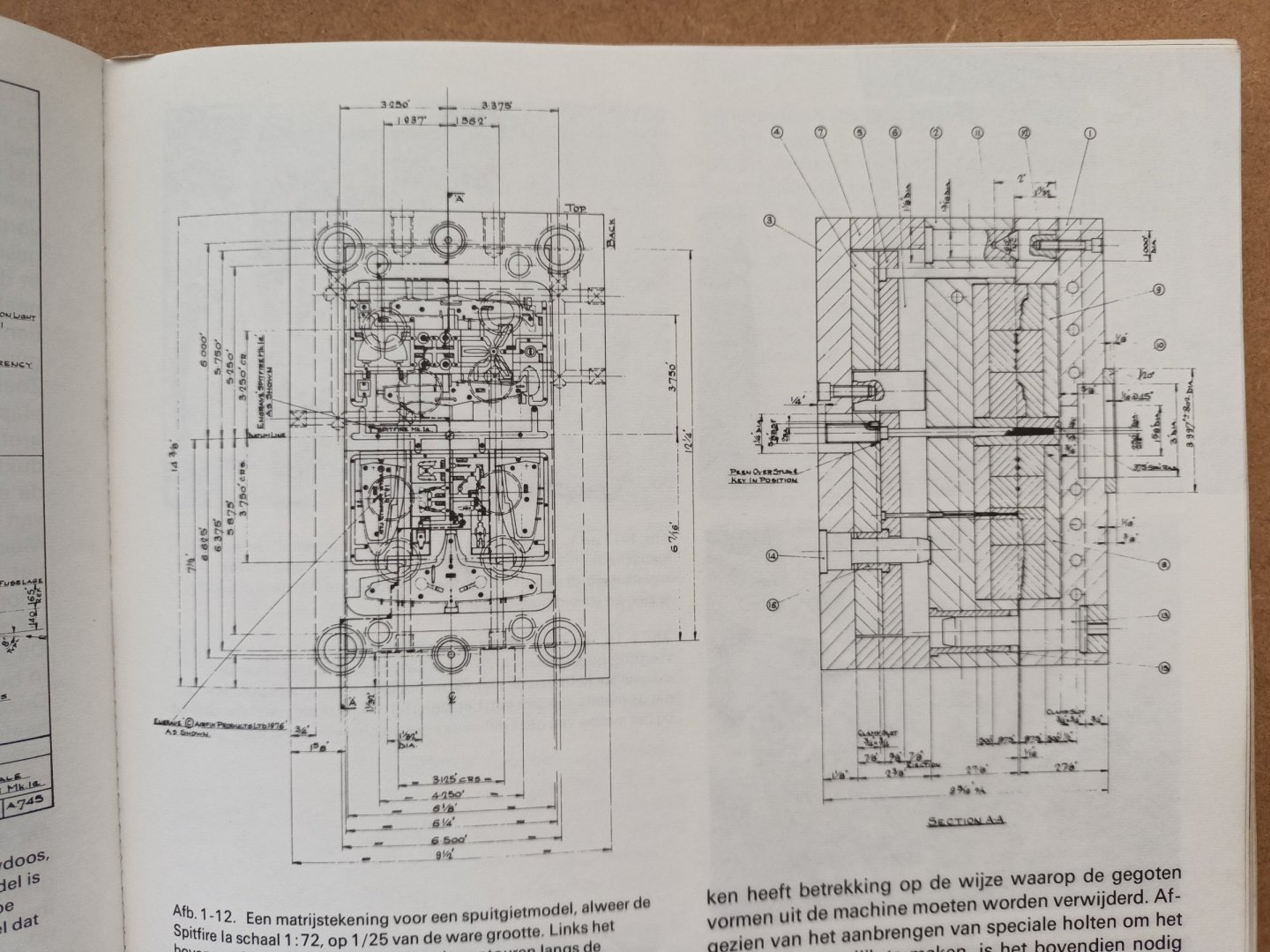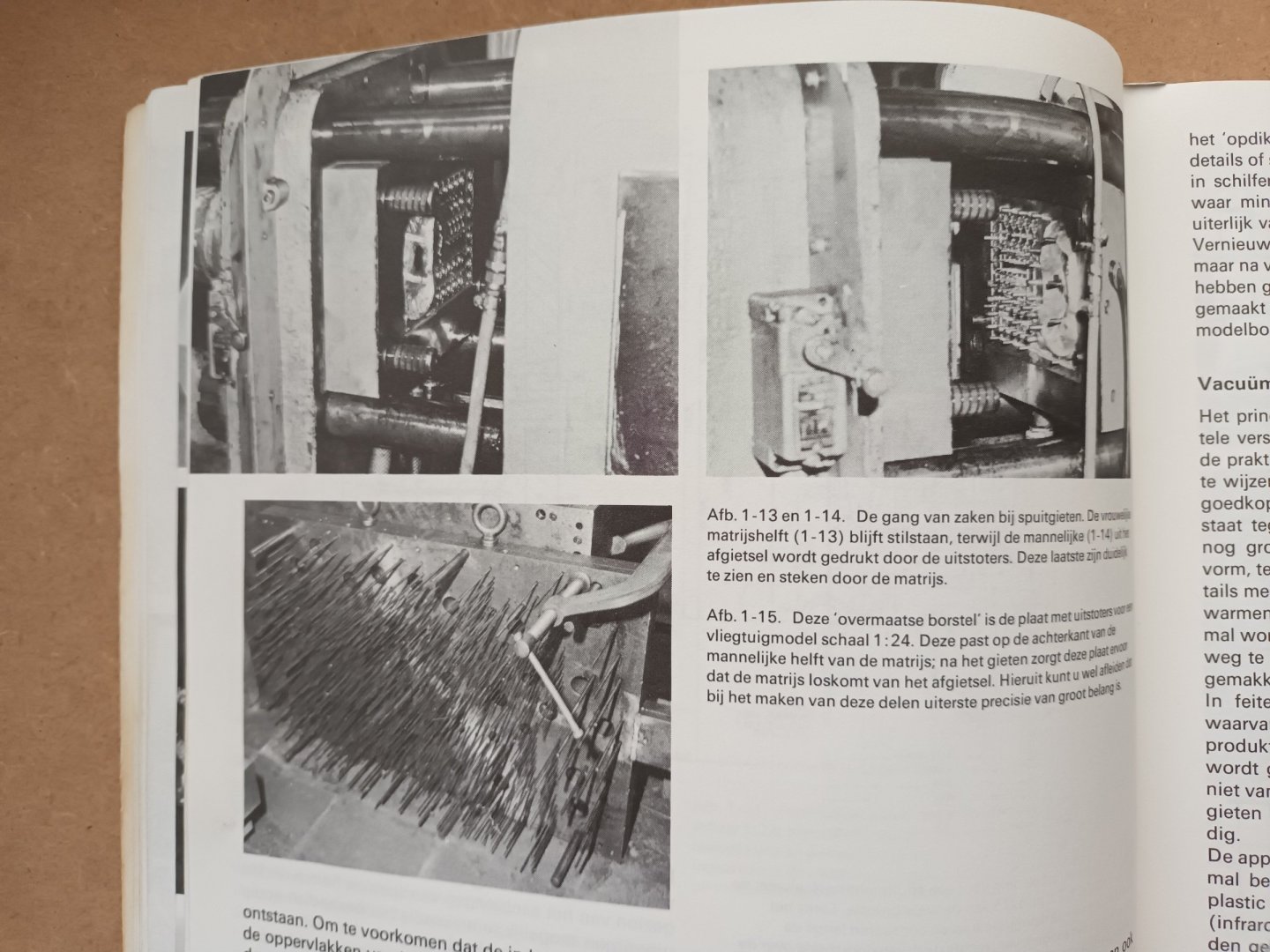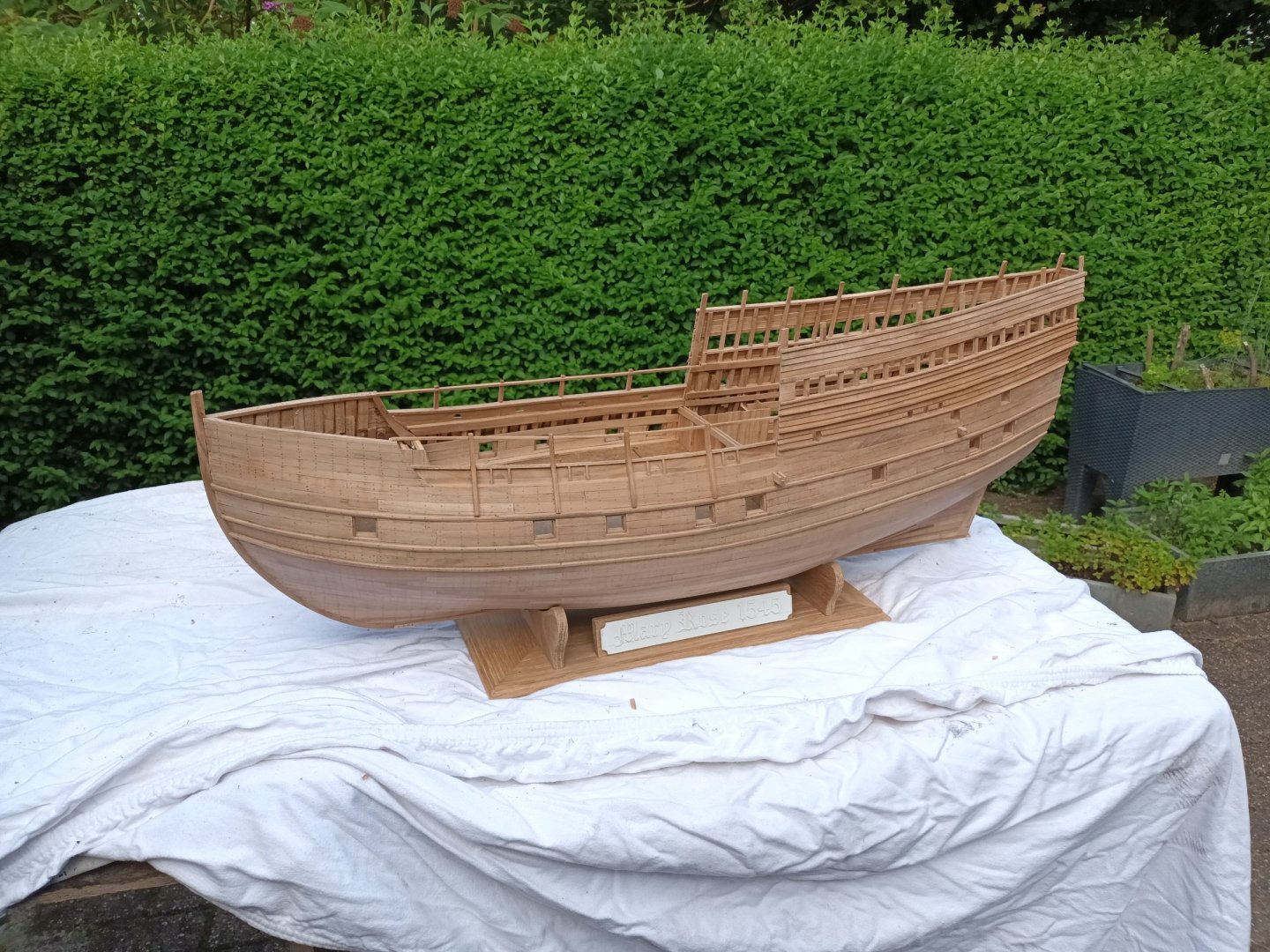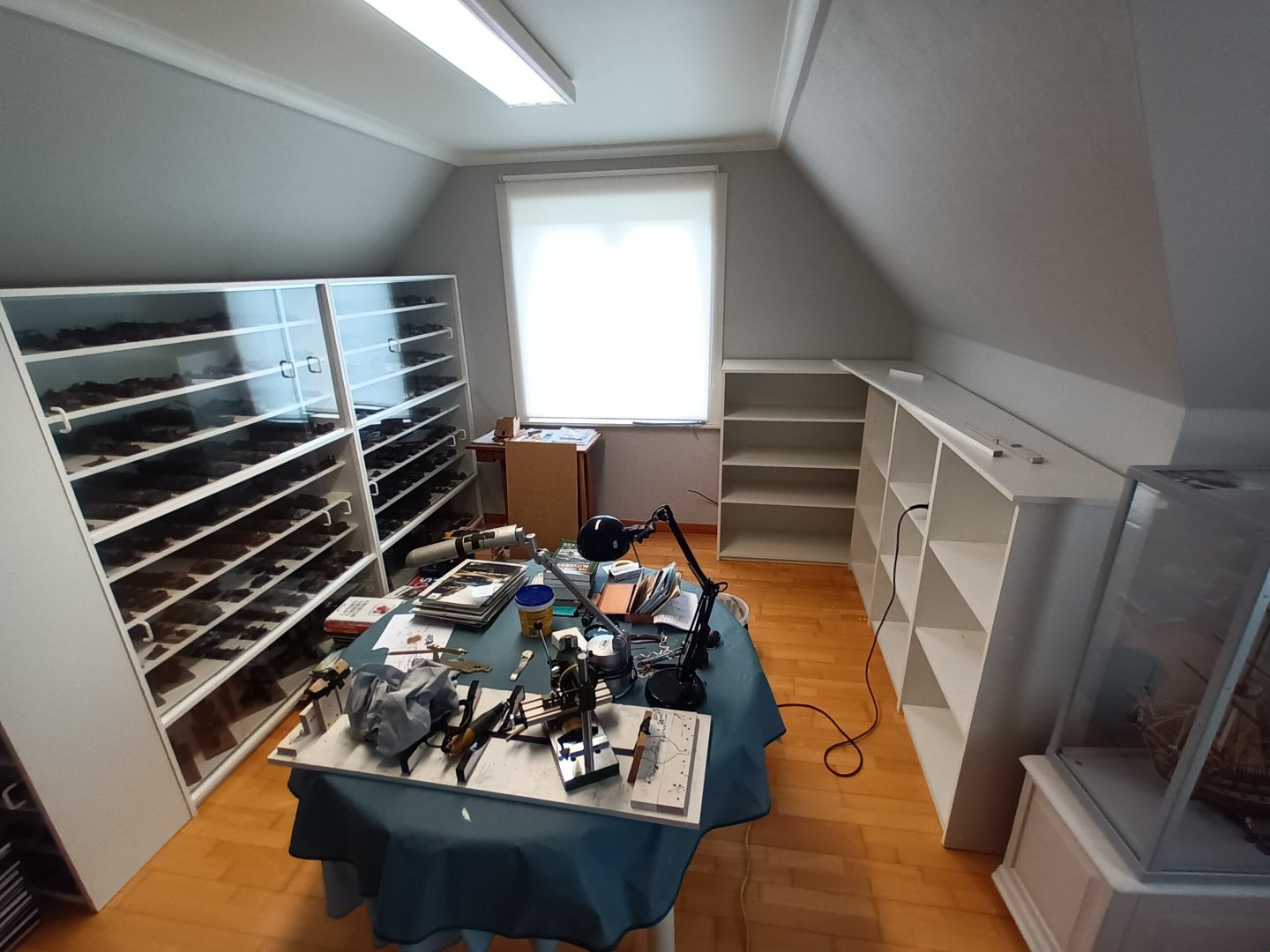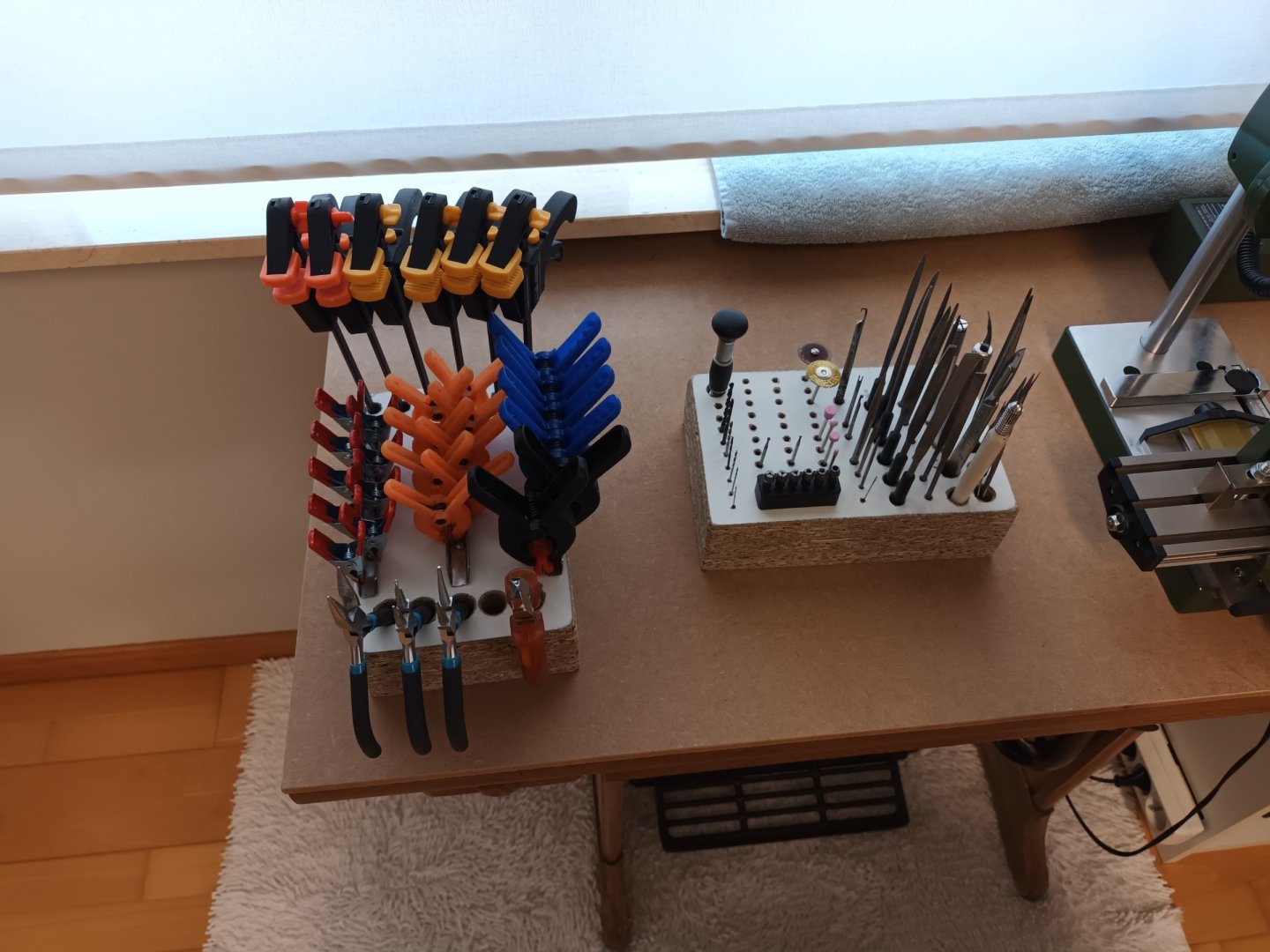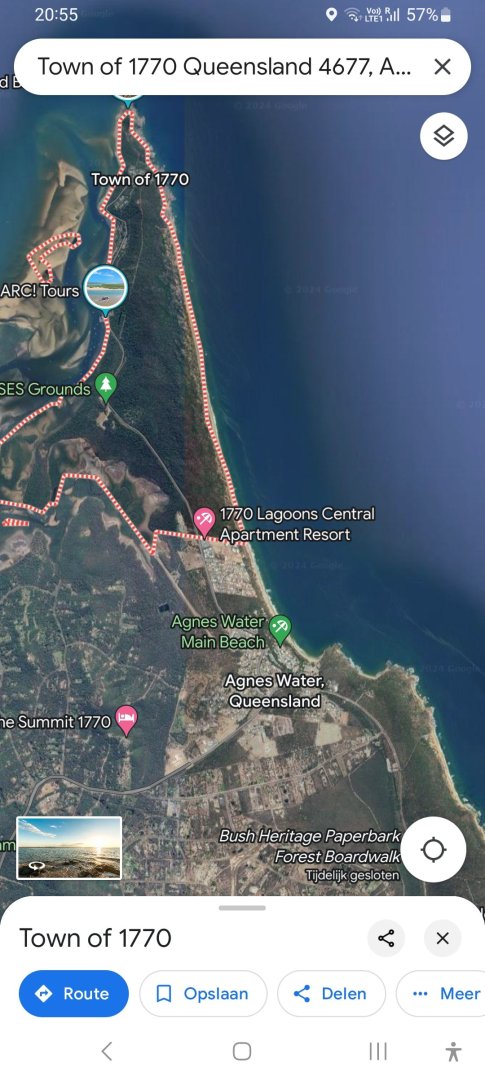-
Posts
4,280 -
Joined
-
Last visited
Content Type
Profiles
Forums
Gallery
Events
Everything posted by Baker
-
With the room completely, cleaned, repainted and reorganized. There is time for Mary again. The cannon deck has been provided with planks in the places where the stairs will come. And has been given a coat of diluted and polished Tamya paint. Little or nothing of all this will be visible later. The railing of the upper deck is ready. Color test for the hull. It is not known for sure whether the original ship was white below the waterline. It could be, but it has never been further investigated. To maximize the effect of the treenails, oil will be applied to the hull. I had some walnut oil left as a test. This is much better than the very diluted Tamya paints. Walnut oil gives a nice result on wood, but you have to repeat the treatment after a few year. So it will be Danish oil or Tung oil.
-
Is the metal degreased? The glue to old?
- 46 replies
-
- Mayflower
- Artesania Latina
-
(and 1 more)
Tagged with:
-
Yes. And https://www.3m.com/3M/en_US/p/
- 176 replies
-
- la reale de france
- heller
-
(and 2 more)
Tagged with:
-
Good job, if you ever want to start working at 3M. I will provide good references for you 😉
- 176 replies
-
- la reale de france
- heller
-
(and 2 more)
Tagged with:
-
After working at a glue factory (3M) for 38 years. Heated acetone has the best chance. Isopropyl alcohol certainly not. But DONT use this heated aceton on your model. Very flammable and very bad for the model 🧐😉
- 176 replies
-
- la reale de france
- heller
-
(and 2 more)
Tagged with:
-
Maybe a little bit. Bet who will notice this on the finished model 😉.
- 210 replies
-
- San Martin
- OcCre
-
(and 1 more)
Tagged with:
-
neatly painted 👍 Take your time and be patiënt. And you will build a great model. Some examples about mold making old scool. Drawings. a airfix spitfire. a mold , the cutty sark from revell The large brush is the extractor plate of the mold. These extractors are sometimes used for the little holes in models. and sometimes cause the annoying round holes in the parts that need to be filled in i went to school to be a mold maker. and when i graduated in the early 80's there was a global economic crisis and i ended up at GM building Opels. And so i started making plastic models 😉
- 176 replies
-
- la reale de france
- heller
-
(and 2 more)
Tagged with:
-
This kit was designed 50 years ago. back then there were no computers, no 3D printers. everything was designed and drawn manually first with pencil and then with ink. each pin in your model means drilling an extra hole in the mold each hole in your model is an extra pin or "ejector" in the mold. in those days. And for this model count at least a year to design and build the mold, with a whole team of experts.
- 176 replies
-
- la reale de france
- heller
-
(and 2 more)
Tagged with:
-
Normaly the schrouds go first. But if you do the schrouds first, they hinder the application of the running rigging. And if you do the running rigging first, they hinder the application of the schrouds. Niet gemakkelijk he...( Eeklo language 😇) Looking at the links in your signature, you have a lot of experience for this 👍
- 69 replies
-
- spanish galleon
- Imai
-
(and 1 more)
Tagged with:
-
- 176 replies
-
- la reale de france
- heller
-
(and 2 more)
Tagged with:
-
-
I did a little MSW during breakfast 😉. I will send you some photos via pm
- 176 replies
-
- la reale de france
- heller
-
(and 2 more)
Tagged with:
-

Intro and interests, from a beginner
Baker replied to Desert_Deckhand's topic in New member Introductions
-
🧐 🤔 👍 reviewed and approved 😉 Very nice work
- 69 replies
-
- spanish galleon
- Imai
-
(and 1 more)
Tagged with:
-

First timer introduction and needing some advice
Baker replied to Stuka's topic in New member Introductions
I started with the Vasa from billings, and after a long time I managed to finish the model. Don't do this. start small, good plan -
Good idea I would do that too. And the masts are then sturdier during the installation of the standing rigging
- 69 replies
-
- spanish galleon
- Imai
-
(and 1 more)
Tagged with:
-
- 69 replies
-
- spanish galleon
- Imai
-
(and 1 more)
Tagged with:
-
About us
Modelshipworld - Advancing Ship Modeling through Research
SSL Secured
Your security is important for us so this Website is SSL-Secured
NRG Mailing Address
Nautical Research Guild
237 South Lincoln Street
Westmont IL, 60559-1917
Model Ship World ® and the MSW logo are Registered Trademarks, and belong to the Nautical Research Guild (United States Patent and Trademark Office: No. 6,929,264 & No. 6,929,274, registered Dec. 20, 2022)
Helpful Links
About the NRG
If you enjoy building ship models that are historically accurate as well as beautiful, then The Nautical Research Guild (NRG) is just right for you.
The Guild is a non-profit educational organization whose mission is to “Advance Ship Modeling Through Research”. We provide support to our members in their efforts to raise the quality of their model ships.
The Nautical Research Guild has published our world-renowned quarterly magazine, The Nautical Research Journal, since 1955. The pages of the Journal are full of articles by accomplished ship modelers who show you how they create those exquisite details on their models, and by maritime historians who show you the correct details to build. The Journal is available in both print and digital editions. Go to the NRG web site (www.thenrg.org) to download a complimentary digital copy of the Journal. The NRG also publishes plan sets, books and compilations of back issues of the Journal and the former Ships in Scale and Model Ship Builder magazines.

